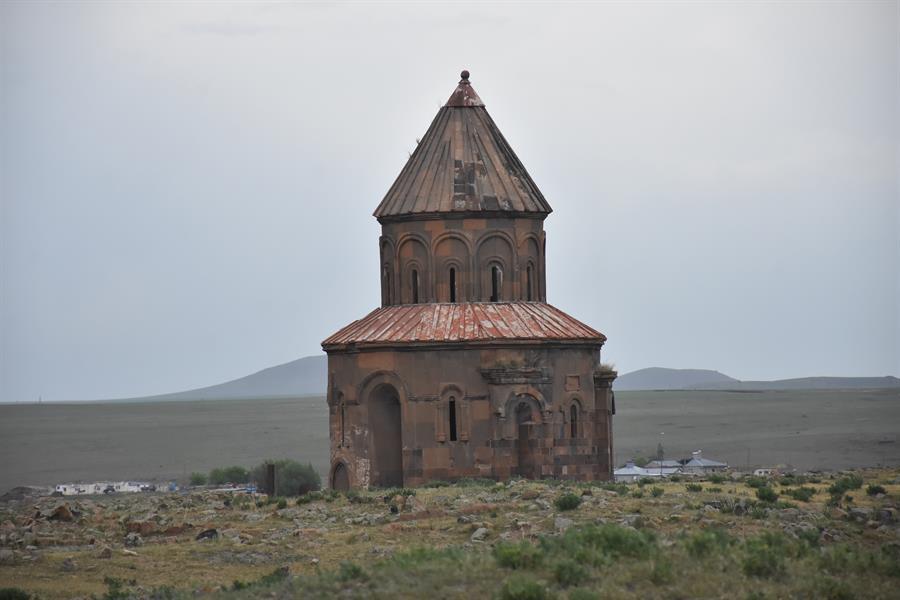
Within the scope of excavation works, efforts will be made to unravel the history of Ani Ruins, also known with the names the City of the World, Cradle of Civilizations, the City of Thousand and One Churches, and City of 40 Gates in history.
Located in the middle of two deep straits of the Arpaçay River, which forms the Turkey-Armenia border, and seized by the Islamic armies in 643 after the rule of the Urartu, Scythian, Persian, Macedonian, Seleukid, Arshakuni, Sassanian and Kamsarakan empires, Ani was ruled by the Bagrationi Dynasty between 884 and 1045, and the Byzantines between 1045 and 1064.
Inscribed on the UNESCO World Heritage List in 2016, Ani was conquered by Sultan Alparslan on Aug. 16, 1064.
Ani has hosted 23 civilizations since its foundation and is home to many religious buildings such as mosques, churches and cathedrals of different beauty and historical value, as well as other invaluable historical buildings and cultural treasures. It is of particular importance as it is the first gateway to Anatolia from the Caucasus.
Some 25 important structures from Ani have survived to the present day. Among them are walls, mosques, cathedrals, palaces, churches, monasteries, firehouses, baths, bridges and a partially destroyed closed passage.
It sheds light on the past with nearly 1,500 underground structures in 32 regions of five valleys, where a significant portion of the population of Ani lived in the Middle Ages.
The excavation work will begin in June at the ruins in collaboration with the Culture and Tourism Ministry’s General Directorate of Cultural Heritage and Museums and the Kafkas University (KAU).
Under the coordination of Muhammet Arslan, the head of Kafkas University’s Art History Department and Ani Ruins excavations, the work will be carried out for 12 months in the ancient city, including the protection and publication process.
Speaking to the state-run Anadolu Agency, Arslan said they were planning for a 12-month excavation for the first time in the history of Ani excavations.
“The excavation work in the field will take six months, and the work will continue with storage and publication for the next remaining six months. Excavations will be carried out around the Seljuk Bazaar, its residences, the large bathhouse and the first Turkish mosque in Anatolia, Ebul Menuçehr. We are also planning to carry out conservation work to preserve the artifacts unearthed during the previous excavations and the ones to be unearthed in our new excavations,” Arslan said.
Arslan also said that the region was one of the most important centers of the Middle Ages. Stating that it was the capital of the Bagrationi Dynasty in 961, Arslan said: “Some of the most monumental structures in the city are the ones belonging to the Christian religion and were built during this period. Later, the second period of prosperity of Ani began in 1064 during the reign of Sultan Alparslan. Due to its location on the Silk Road and being the first gate to enter Anatolia from the Caucasus, the city has become very rich; this wealth increased the population, and it became a city that received immigration.”
“According to the statements of travelers, a population of approximately 100,000-150,000 lived here. And the architectural culture also revived in parallel with the improvement of trade. In Ani, it is possible to see all the structures that should be in a city. It is a city lying on the ground, with many areas ranging from the palace, bathhouse, mosque, fire temple and mosque to residences and commercial areas,” Arslan added.